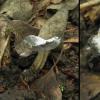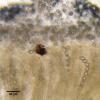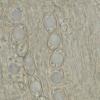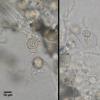
04-01-2026 17:45
 Stephen Martin Mifsud
Stephen Martin Mifsud
I was happy to find these orange asmocyetes which

03-01-2026 13:08
Niek SchrierHi all,We found groups of perithecia on a Lecanora

29-12-2025 17:44
Isabelle CharissouBonjour,J'aimerais savoir si d'autres personnes au

02-01-2026 17:43
MARICEL PATINOHi there, although I couldn't see the fruitbody, I

01-01-2026 18:35
Original loamy soil aside a artificial lake.The co

31-12-2025 19:27
Collected from loamy soil, at waterside (completel
 Hi,
Hi,yesterday I found a decaying Helvella covered at the spore bearing part with the anamorph of Hypomyces cervinigenus i.e. Mycocone cervina.
About the species of the Helvella I am not sure. Can it be H. lacunosa with spores 21-21.4 x 12.4-13.6 µm? A bit large, aren't they better queletii also by shape?
The globose conidia of the Mycogone measure (without the ornament) 10.5-14.5 x 10.8-14 µm.
Habitat was on the side of a path on calcareous sandy soil under deciduous trees.
Cheers
Martin
Regards.


Best regards
Martin
cheers
Thomas


Best regards
Martin
In the follow link there is a paper on the revision of type specimens in Helvella published in Mycotaxon, http://www.ingentaconnect.com/content/mtax/mt/2012/00000119/00000001/art00006 (it is open access). Indeed, Harmaja (1977, Karstenia 17: 40-44) suggested that H. queletii is a synonym of H. solitaria and, and H. confusa as a new species, independent of H. leucomelaena. Then, Abbott & Currah (Mycotaxon 1997, 62:1-125) suggested that H. confusa is a synonym of H. leucomelaena. After I review the type specimens of these species, and I agree that H. queletii is a synonym of H. solitaria, and H. confusa of H. leucomelaena, but H. solitaria sensu Dissing can not be attributed to a particular taxon, because the specimens cited for Dissing for that species are actually mixed specimens of H. solitaria and H. leucomelaena.
I have not published yet the another part of revision of type specimens, where I agree that H. confusa is a synonym of H. leucomelaena, but I hope in the coming weeks send it to the revisors. It will be a manuscript on the phylogeny of Helvella based on morphological and molecular characteristics.
But, if you are interested, write to landeros@uaq.mx, and I will send you the phylogeny of Helvella that we got.
Best.
Fidel

my attention was just drawn to your recent article on Helvella in Mycotaxon. I am sorrry but I must say that you applied the term hemiamyloid incorrectly. What you report for the excipulum using Melzer's Reagent is obviously a dextrinoid reaction. For a definition of dextrinoidity see my paper in Mycotaxon (1987) p. 424. It remains to be clarified in Helvella whether the reaction is due to glycogen in the cells, or located in the cell walls.
The hemiamyloid reaction is defined by a red reaction in Lugol, while negative in Melzer's, and converted to a blue reaction when KOH-pretreated.
For an introduction to hemiamyloidity please see my homepage
http://www.gbif-mycology.de/HostedSites/Baral/IodineReaction.htm?
Zotto

Sorry for being so late in responding but it is mainly due to the impression I had that this post is focused only to Mycogone issue!
First of all, I would like to add few items regarding to Fidel's erroneous report on hemiamyloidity in Helvella spp (Landeros et al 2012). I just today red it carefully! In our extensive studies of few ascomycete orders we never saw any (hemi)amyloid reactions so far in Pezizales except for the periascal mucus (and in intercellular spaces in only one species)! Of course, applying the IKI reagent. All red(dish) reactions in Helvella were however related to dextrinoid reaction of Melzer's reagent (walls) in excipular tissues and reddish reaction povoked in intercellular matter only in certain taxa! So, I do not presume that gycogen accumulations could be responsible for these two seemingly different histochemical reactions. We're still in intensive studies in this point!!
Furthermore, I fully agree with Nicolas that Martin's Helvella is H. solitaria (=H. queletii). H. leucomelaena cannot be the case here because the stipe is too much elevated, cylindrical, sharply distinguished from the pileus and the ribs are too strong; also spores are too short for H. leucomelaena - a species that is in South-Eastern Europe confined to Pinus spp. forests.
And finally, all our collections (8) from Abies/Picea altimontane forests is clearly not conspecific to H. leucomelaena. We are using the name H. confusa for it for the time being.
Cheers,
Neven
Thank you very much for the clarification on hemiamyloid reaction. I regret the error, thanks.
Best
Fidel






